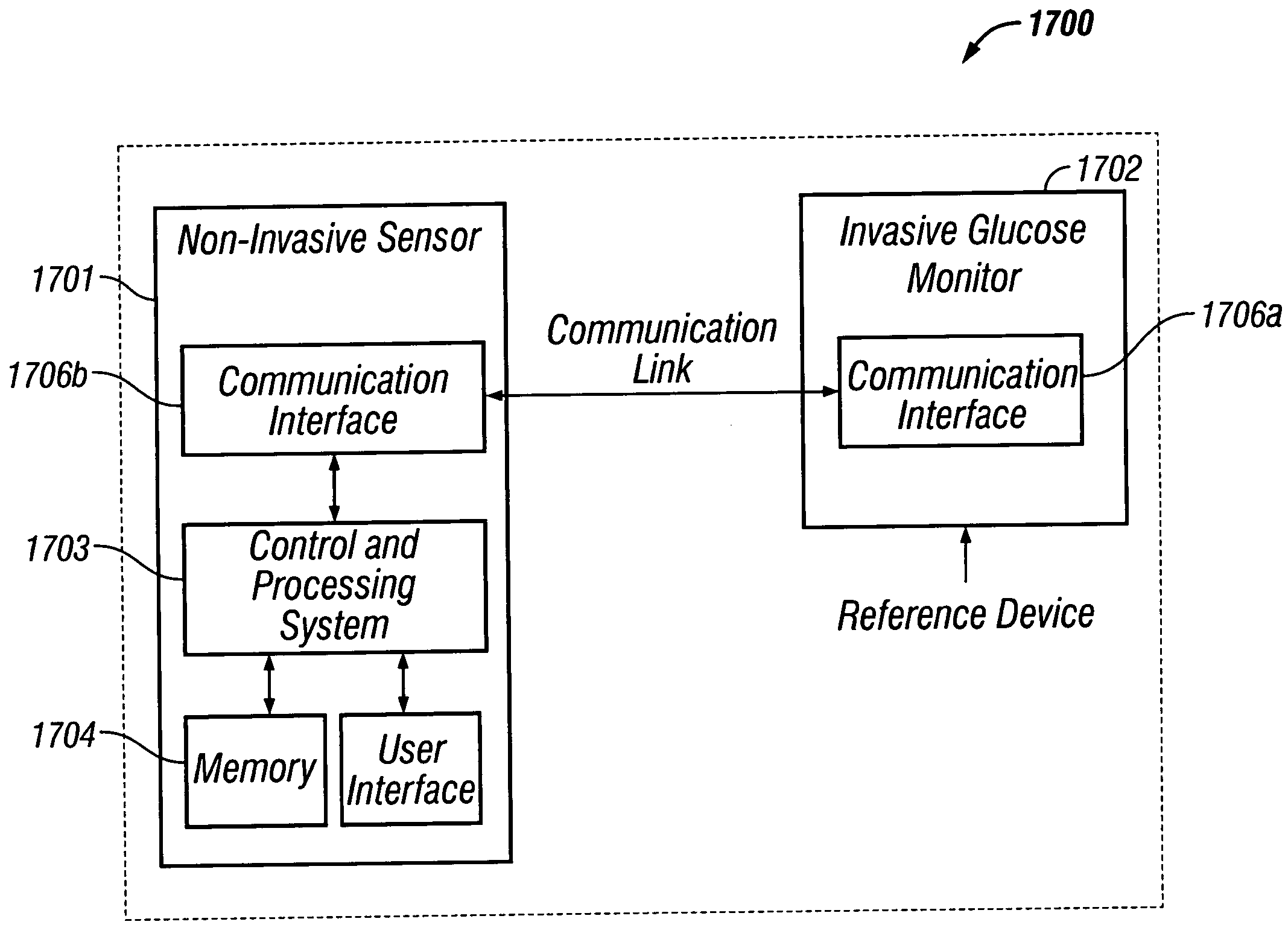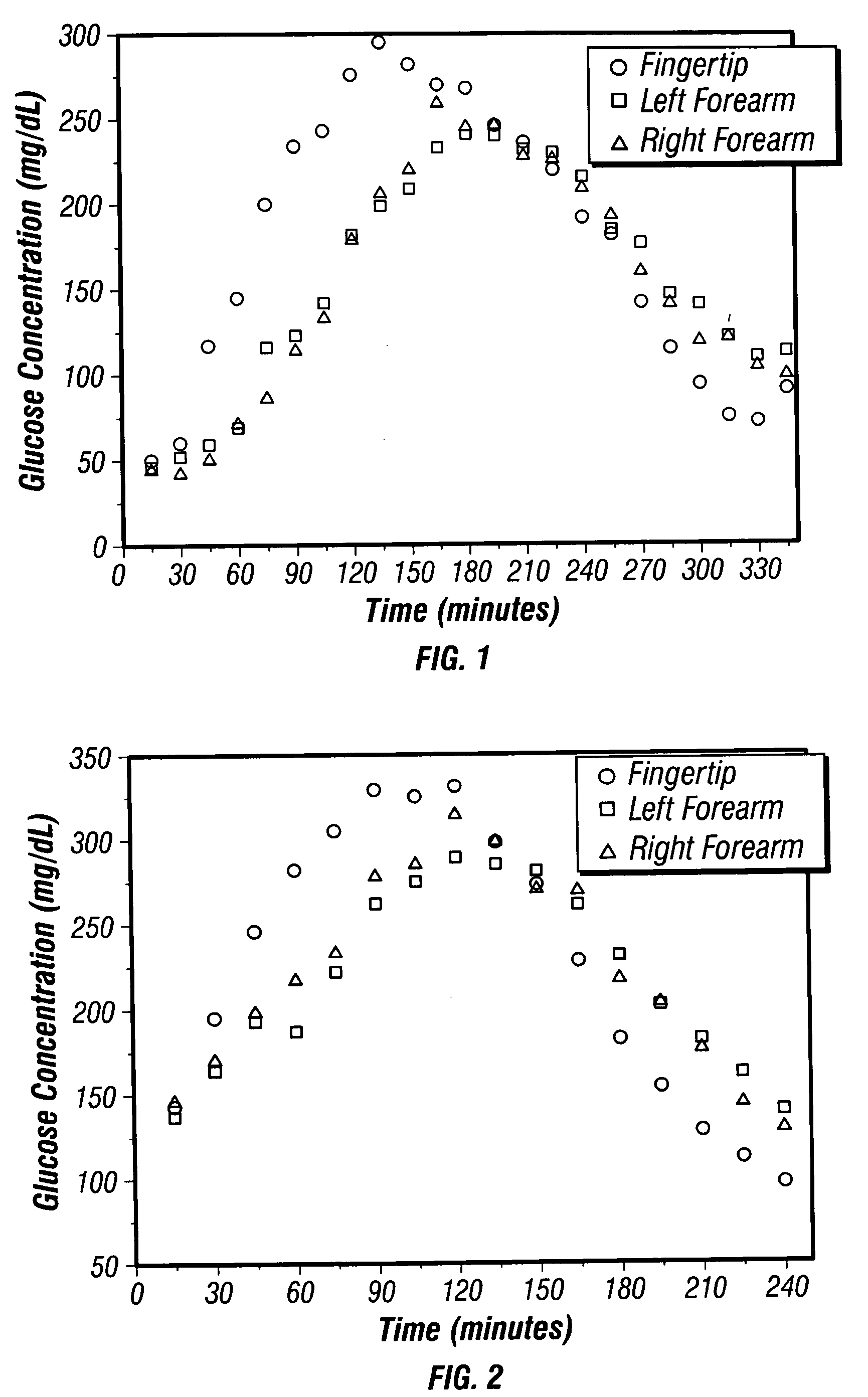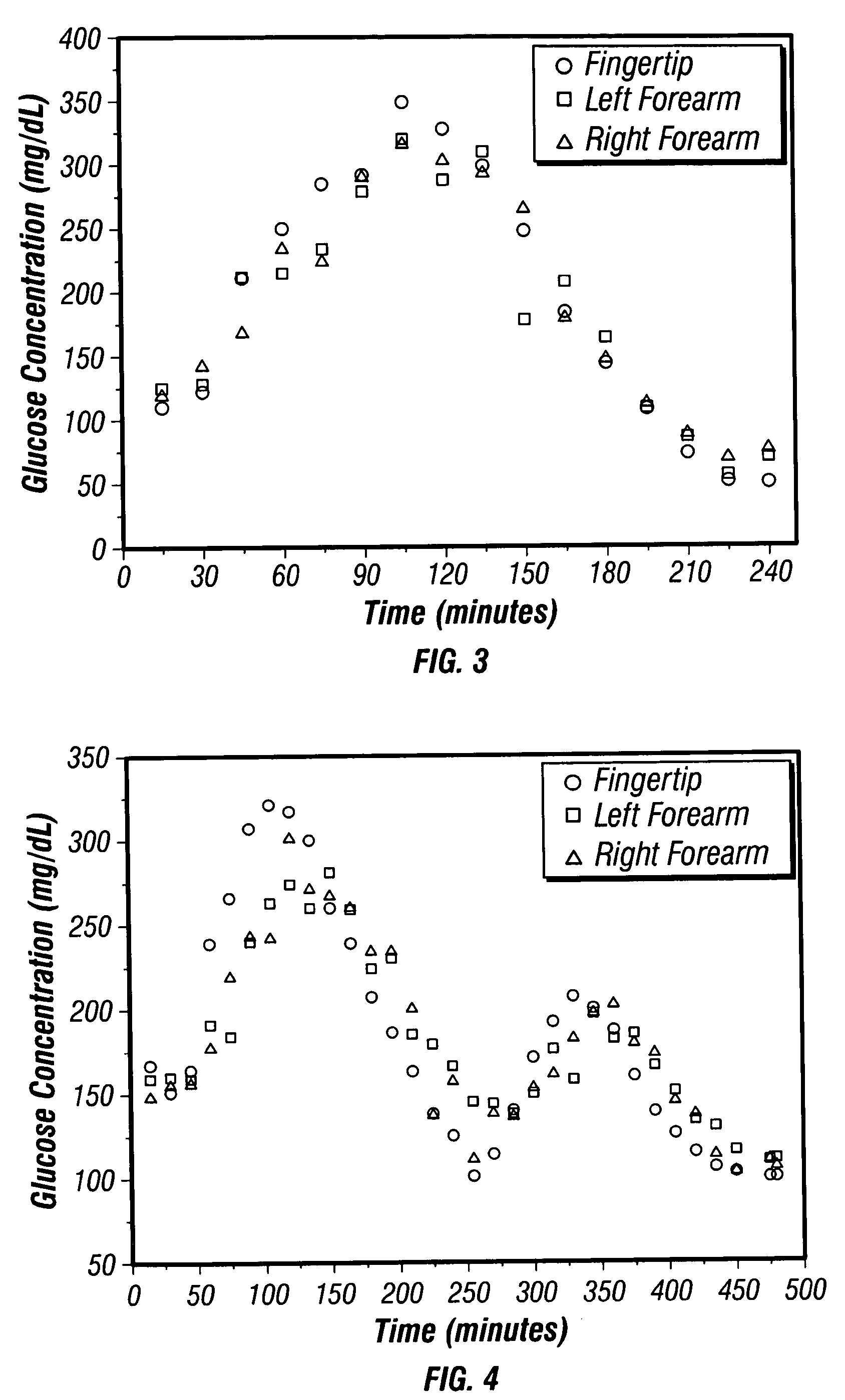Method and apparatus for using alternative site glucose determinations to calibrate and maintain noninvasive and implantable analyzers
a glucose analyzer and alternative site technology, applied in the field of calibration and maintenance of glucose analyzers, can solve the problems of inability to accurately calibrate and maintain glucose analyzers, inability to accurately measure glucose, and current monitoring techniques that discourage regular use, so as to achieve the effect of negative effect on accuracy and precision and indirect calibration
- Summary
- Abstract
- Description
- Claims
- Application Information
AI Technical Summary
Benefits of technology
Problems solved by technology
Method used
Image
Examples
example # 1
EXAMPLE #1
[0079] In a first example, variation of glucose concentration at locations in the body is demonstrated at fixed points in time. A total of twenty diabetic subjects were run through one of two glucose profiles each having two peaks so that the resulting curves formed the shape of an ‘M,’ shown in part in FIG. 1, over a period of eight hours. Thus, glucose concentration started low at around 80 mg / dL, was increased to approximately 350 mg / dL, and was brought back to about 80 mg / dL in a period of about four hours. The cycle was immediately repeated to form an ‘M’-shaped glucose concentration profile. These profiles were alternately generated with intake of a liquid form of carbohydrate (50-100 g) or intake of a solid form of carbohydrate (50-100 g) in combination with insulin to generate the two excursions of the ‘M’ profile. Traditional invasive fingertip capillary glucose concentrations were determined every 15 minutes throughout the 8-hour period. Each fingertip determinat...
example
[0139] A single calibration model was applied to 4,980 noninvasive spectra collected from the volar aspect of the forearm of twenty-six subjects covering 233 unique visits utilizing nine instruments collected over a period of eight months. Each subject was tested every fifteen minutes for a period of approximately eight hours. The resulting glucose predictions were compared to both traditional invasive reference fingertip and alternative invasive reference forearm glucose concentrations.
[0140] A concentration correlation plot of the predicted glucose concentrations versus the forearm reference glucose concentrations is presented in FIG. 8. A Clarke error grid analysis for this data demonstrates that 81.9 and 17.9 percent of the data falls into the A and B region, respectively. Thus, 99.8 percent of the data are predicted clinically accurately versus the alternative invasive reference forearm glucose concentrations. However, as shown in FIG. 9, accuracy diminishes when plotted again...
PUM
| Property | Measurement | Unit |
|---|---|---|
| wavelength | aaaaa | aaaaa |
| wavelength range | aaaaa | aaaaa |
| concentration | aaaaa | aaaaa |
Abstract
Description
Claims
Application Information
 Login to View More
Login to View More - R&D
- Intellectual Property
- Life Sciences
- Materials
- Tech Scout
- Unparalleled Data Quality
- Higher Quality Content
- 60% Fewer Hallucinations
Browse by: Latest US Patents, China's latest patents, Technical Efficacy Thesaurus, Application Domain, Technology Topic, Popular Technical Reports.
© 2025 PatSnap. All rights reserved.Legal|Privacy policy|Modern Slavery Act Transparency Statement|Sitemap|About US| Contact US: help@patsnap.com



